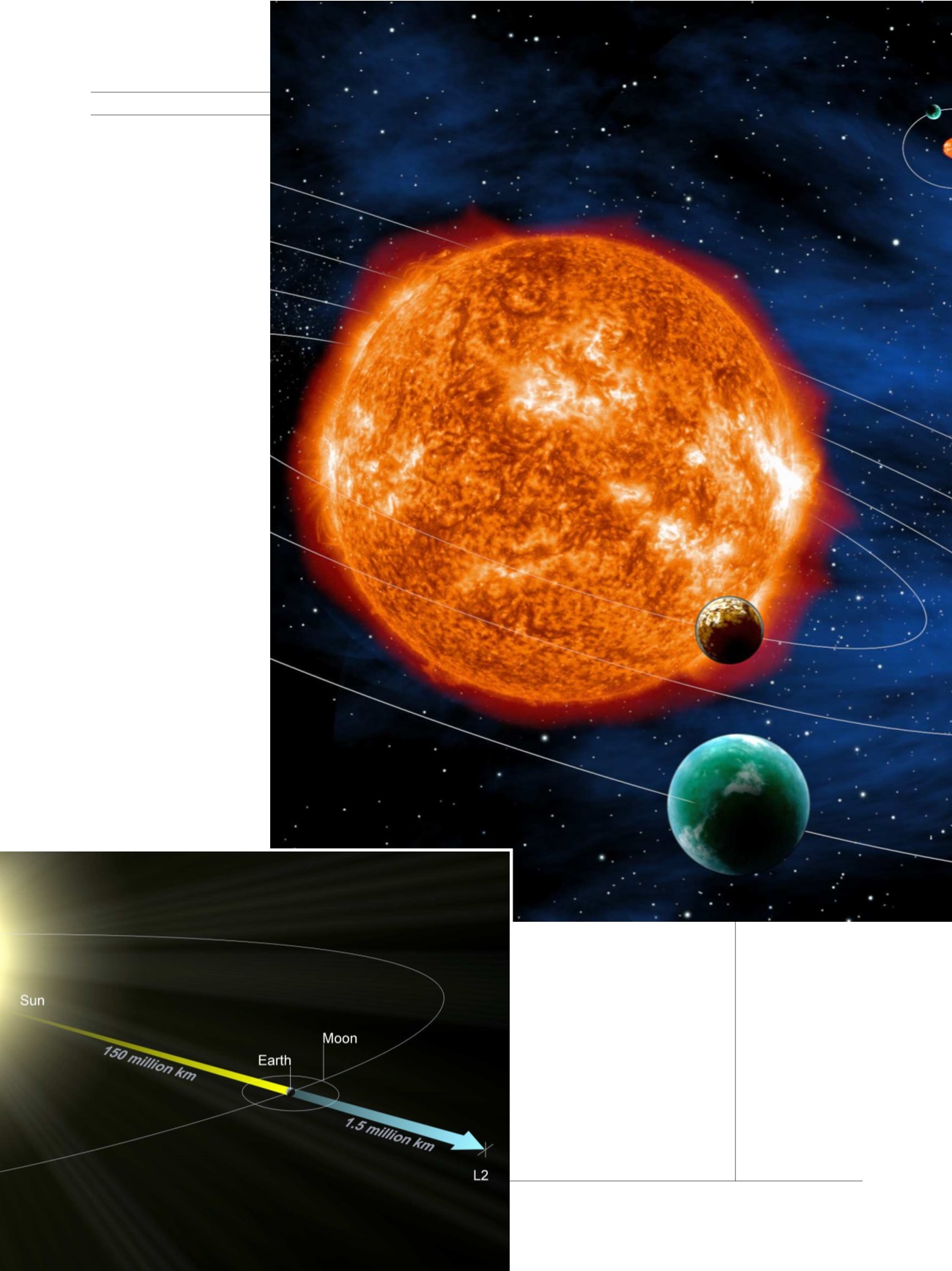

24
SEPTEMBER-OCTOBER 2017
300,000 and 1 million
stars (the counts are de-
pendent on various ob-
servational strategies
that might be adopted).
As one may guess from
the comprehensive name
of this new space obser-
vatory, the countless pho-
tometric measurements
it will perform during its
mission will help dis-
cover planets transiting
stellar discs and the os-
cillations that involve
those stars, pulsations of
a modest size that are
displayed in the outer-
most layers.
PLATO’s assignment will
essentially be to demon-
strate the existence of
variations in luminosity
and their periodicity,
while it will be the task
of the large ground- or
space-based telescopes
to confirm the existence
of planets and oscilla-
tions, and to add as much
information as possible.
Unlike its predecessors
CoRoT and Kepler,
PLATO will study rela-
tively bright and thus
generally closer stars, en-
abling the determination
of the orbital parameters
and the main physical fea-
tures of the planets and
their stars. The accuracy of
PLATO’s photometric mon-
itoring will allow the de-
termination of the diame-
ters of the transiting plan-
ets with just a 3% margin
of error, and this will allow
A
bove, the
PLATO mis-
sion will assemble
the first catalogue
of confirmed and
characterised
planets with
known mean den-
sities, composi-
tions, and
evolutionary ages/
stages. [ESA, C.
Carreau]. Left, a
representation of
the L2 point. [ESA]
















